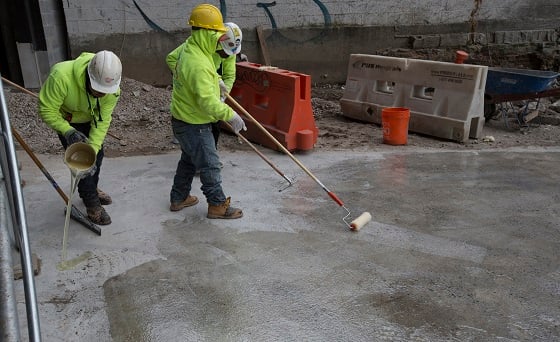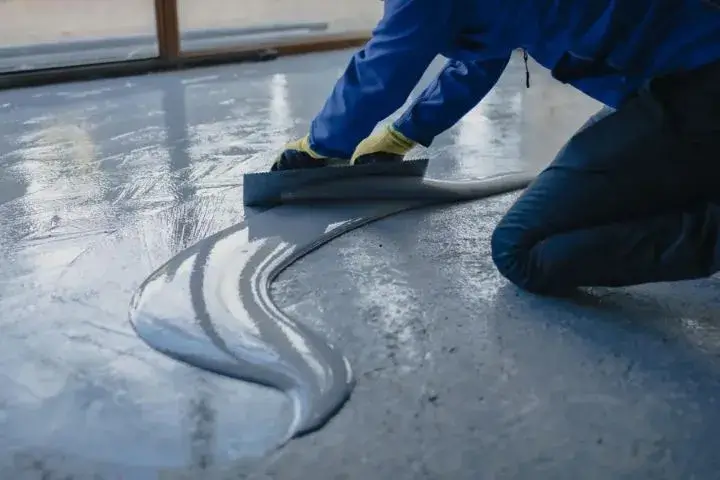How Waterproofing Works: An In-depth Look at Techniques and Technologies
Waterproofing is vital for protecting structures from moisture-related damage. It includes different techniques and modern technologies that produce obstacles versus water intrusion. Standard techniques, such as compressed clay, exist together with modern technologies like liquid-applied membrane layers. Understanding the subtleties of these approaches is crucial for effective application. The efficiency of any waterproofing option hinges not only on the methods used however additionally on ongoing upkeep and examination. What are the essential factors that affect lasting performance?
Comprehending the Basics of Waterproofing
Waterproofing is a necessary process that safeguards structures from water intrusion, which can result in substantial damages in time. This method entails the application of various materials and methods made to create a barrier against wetness. The key objective is to avoid water from permeating surface areas, which can create deterioration, mold and mildew growth, and structural instability.Various elements influence the option of waterproofing approach, consisting of the type of structure, its place, and ecological problems. Recognizing the physics of water activity and the residential properties of different materials is vital in choosing a reliable waterproofing solution.Effective waterproofing not just safeguards structures however also enhances their longevity and integrity. Usually, it is integrated into the design phase of construction to guarantee detailed defense. As recognition of water-related issues grows, the value of comprehending waterproofing principles becomes progressively clear to designers, building contractors, and residential property owners alike.
Traditional Waterproofing Techniques
Conventional waterproofing techniques have actually been used for centuries, relying upon tried and true strategies and materials to guard frameworks from water damages. One of the oldest approaches includes using clay, which, when compacted, develops an all-natural obstacle versus moisture. In addition, asphalt, a sticky, black material originated from oil, has been used for its waterproof properties, usually used to roofing systems and foundations.Another technique involves the application of lime-based plasters, which give a breathable layer that enables moisture to get away while avoiding water access. Thatch roof, a typical method still seen in some societies, supplies superb waterproofing because of its snugly loaded straw layers.Moreover, making use of stone and block has actually been famous, as these materials are naturally immune to water when correctly mounted. In general, typical waterproofing methods highlight the importance of selecting proper materials and building techniques to enhance longevity against water intrusion.
Modern Waterproofing Technologies
Improvements in modern waterproofing innovations have actually changed the way structures are protected from water damages. Cutting-edge methods such as liquid-applied membrane layers and innovative sealants have improved the efficiency and convenience of waterproofing services. These innovations permit smooth application, reducing the risk of leakages and ensuring extensive insurance coverage over intricate surfaces.Moreover, the integration of smart innovations, such as moisture sensors and automated monitoring systems, enables real-time evaluation of waterproofing performance. This positive method facilitates timely maintenance and decreases long-term fixing costs.Additionally, developments in spray-applied coverings provide fast application and excellent adhesion, adjusting to numerous substratums while providing robust protection. Methods like polymer-modified systems additionally improve flexibility and resilience, making them suitable for varied environments. In general, modern-day waterproofing technologies not just minimize water breach however likewise add to the longevity and sustainability of structures, noting a considerable shift in the industry.
Products Utilized in Waterproofing
The efficiency of waterproofing services heavily depends on the products used in their application. Various products are employed to develop obstacles against water access, each with special properties matched for different environments. Commonly made use of materials consist of membranes, coverings, and sealants.Liquid-applied membrane layers, typically made from polyurethane or acrylic, form a smooth barrier that adjusts to complex surface areas. Sheet membranes, commonly built from rubber or thermoplastic, deal resilience and are ideal for larger locations. Furthermore, cementitious waterproofing products, composed of cementitious compounds, give superb attachment and flexibility.Sealants made from silicone or polyurethane are important for joints and seams, making certain extensive defense. Additionally, innovative materials, such as geo-composite membrane layers, combine several features, enhancing performance. Overall, the option of waterproofing materials is crucial in attaining lasting and efficient water resistance, customized to specific project needs and environmental conditions.
Typical Applications of Waterproofing
Waterproofing plays an essential function in different fields, ensuring the durability and stability of frameworks. Usual applications consist of residential services that safeguard homes, business infrastructure that safeguards companies, and industrial settings that need durable security against wetness. Comprehending these applications highlights the significance of waterproofing in keeping both safety and functionality throughout various atmospheres.
Residential Waterproofing Solutions
Lots of property owners encounter obstacles with wetness breach, making effective property waterproofing solutions essential. Various approaches exist to resolve this issue, including inside and outside waterproofing systems. Inside services typically entail the application of sealers and layers to cellar walls, which help prevent water infiltration. Outside approaches normally consist of the setup of drainage systems and water-proof membrane layers that divert water away from the foundation.Additionally, property owners might take into consideration sump pumps to eliminate water accumulation and dehumidifiers to control moisture levels. Proper grading and using rain gutters likewise play an important duty in handling water circulation around the home. By applying these approaches, home owners can considerably reduce the threat of water damage and mold and mildew growth, ensuring a completely dry and risk-free living environment.

Business Infrastructure Protection
Effective waterproofing services play an important duty in the defense of business framework. Foundation waterproofing Omaha. These strategies are essential for safeguarding structures, car park frameworks, and bridges from water damages, which can jeopardize architectural integrity and lead to pricey fixings. Usual applications include the installation of membranes, finishes, and sealers that produce barriers versus wetness infiltration. Locations such as cellars, roofings, and exterior walls are often focused on to ensure longevity and durability. In addition, waterproofing systems can boost power effectiveness by avoiding water-related problems that may lead to mold and mildew growth and wear and tear. By carrying out robust waterproofing procedures, home proprietors can secure their financial investments and preserve functional efficiency, inevitably adding to the overall link sustainability of business centers
Industrial Applications Introduction
While numerous sectors face distinct difficulties, the requirement for trustworthy waterproofing options remains a continuous in commercial applications. Industries such as manufacturing, building, and power typically encounter atmospheres where moisture direct exposure can jeopardize structural stability and operational effectiveness. In making centers, waterproofing is critical for protecting equipment and products from water damages. In building, it safeguards foundations and cellars versus groundwater infiltration. The power sector counts on waterproofing for the protection of equipment in hydroelectric plants and offshore structures. Furthermore, food processing industries use waterproofing to guarantee health and conformity with safety and security requirements. Overall, efficient waterproofing remedies are crucial for improving durability, safety, and performance throughout various industrial setups.
Maintenance and Durability of Waterproofing Solutions
Although waterproofing options are developed to provide lasting defense against wetness intrusion, routine upkeep is important to ensure their effectiveness and durability - Basement waterproofing Omaha. Regular examinations play a significant function in determining potential issues such as splits, peeling off, or indicators of water damage. Addressing these issues immediately can stop more degeneration and expensive repairs.Additionally, cleaning the surface of waterproof areas like it helps remove dust and particles that could compromise the integrity of the waterproofing obstacle. It's also a good idea to reapply protective finishes or sealers as suggested by suppliers to preserve suitable efficiency. Ecological variables, such as UV exposure and extreme climate condition, can influence the life-span of waterproofing materials, making normal analysis vital
Often Asked Questions
Can Waterproofing Be Applied in Winter?
The question of applying waterproofing in winter elevates worries about adhesion and treating. Many products might not execute at their ideal in low temperatures, requiring mindful selection and important site factor to consider of particular standards for reliable application.
Exactly How Long Does Waterproofing Normally Last?
The duration of waterproofing performance differs based on products and environmental variables. Typically, it can last from five to ten years, yet normal maintenance and assessments are essential to assure peak efficiency and long life.
Is DIY Waterproofing Effective and Safe?
The performance and safety and security of do it yourself waterproofing rely on different aspects, including worldly quality and application strategy. While some people accomplish sufficient outcomes, others may encounter problems that compromise long-lasting security and architectural integrity.
What Are the Signs of Failing Waterproofing?
Indicators of stopping working waterproofing consist of noticeable water discolorations, peeling off paint, mold development, moldy odors, and moisture in walls or ceilings - French drain installation Omaha. These signs recommend endangered barriers, necessitating punctual examination and prospective remediation to avoid more damage
How Do I Choose the Right Waterproofing Service Provider?
